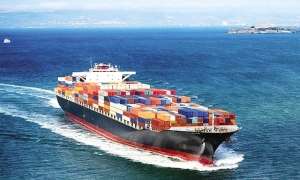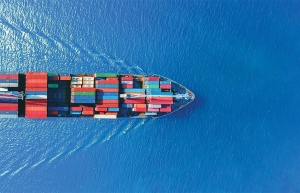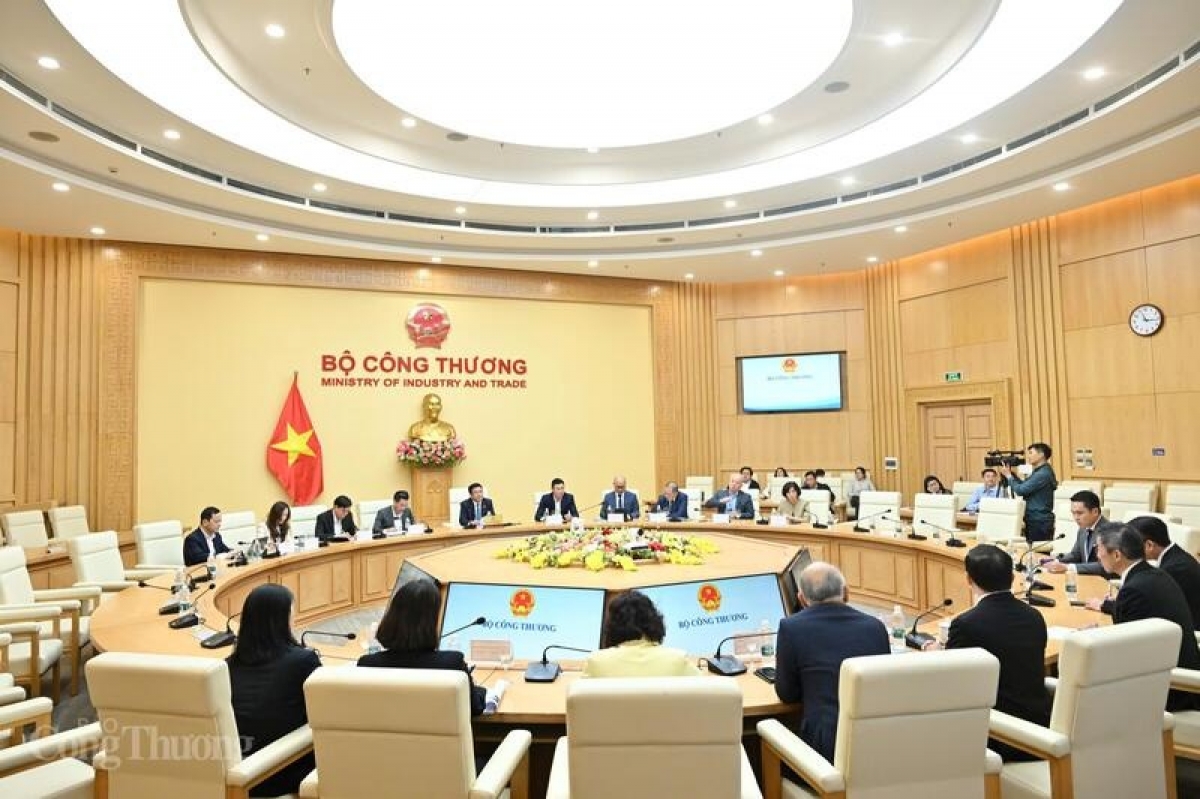INTERNATIONAL INVESTMENT
AND PORTAL
Amid significant congestion recorded at major maritime hubs worldwide, Vietnam is emerging as a viable alternative. With traditional centres like Singapore in Southeast Asia under immense pressure, Vietnam’s ports offer a strategic option to alleviate the burden and manage the overflow of regional shipments effectively.
 Vu Nguyen Hanh, editor of Vietnam Briefing at Dezan Shira & Associates
Vu Nguyen Hanh, editor of Vietnam Briefing at Dezan Shira & Associates
Like major shipping centres worldwide, Singapore is experiencing its worst port congestion since the pandemic. The situation, part of the broader disruption in global supply chains, is the ripple effect of various factors.
According to data from analytics firm Linerlytica, global port congestion dipped slightly from the 2.5 million 20-foot equivalent units (TEU) waiting at anchorages by mid-June to 2.24 million TEU by the end of June.
Southeast Asian ports accounted for 23 per cent of the capacity waiting for berthing slots worldwide, as ports in Asia remain a congestion hotspot. Specifically, Singapore witnessed a 4–5-day delay in berthing despite vessel omissions reducing the vessel queues. Neighbouring ports of Port Klang and Tanjung Pelepas experienced delays of up to 2-3 days.
In China, the worst-affected ports are Shanghai and Ningbo, with delays of four and two days, respectively.
It is important to note that berthing, which typically takes less than a day, is now a prolonged process. This is particularly critical given that Singapore is the world’s second-largest container port.
The primary reason for the bottleneck in global shipping is the relentless Houthi rebel aggression and piracy attacks in the Red Sea. This has prevented vessels from routing through the area, forcing a longer navigation around Africa. The change of routes is causing ships to miss their sailing schedules and have fewer available port calls, leading to significant delays and offloading more cargo than usual when berthing at big transshipment hubs like Singapore.
Consultancy Drewry Maritime Advisors has indicated a significant 22 per cent increase in Singapore’s average offload volume of cargoes from January to May, indicating the scale of the issue.
Adding to the pressure, liners are now compelled to expedite their schedules to avoid the impending US tariffs on Chinese goods, including steel and medical products, set to take effect in August. These ships, which typically traverse the Strait of Malacca and dock in Singapore, are further burdening the country’s ports with additional vessels.
Leaders of DHL Global Forwarding Asia-Pacific also highlighted that the peak shipping season arrived earlier this year as firms worldwide accelerated their restocking to prepare for higher demands. According to data provider Descartes, the 10 largest US seaports recorded a 12 per cent increase in the total container import volume in May. Freight shipments from Asia to Europe are also on the rise as restocking attempts are accounted for.
Overcrowded ports of call
While redirecting entire cargo loads to alternate ports might not be feasible, liners are being advised to redistribute their cargo to less busy ports to relieve major hubs from current pressures. This approach will both reduce delays and optimise available port infrastructures.
While Singapore and other regional hubs are experiencing tension, Vietnam’s ports might be plausible alternatives. Bordering Thailand through the Gulf of Thailand, Vietnam boasts 3,260km of coastline and 320 ports, making it a notable trade point for both the west and east.
Among the 320 ports in Vietnam are 44 seaports with a total capacity of handling 700 million tonnes annually. In 2022, Lloyd Maritime Company from the United Kingdom ranked three of Vietnam’s seaports in the top 50 globally in terms of cargo throughput: Saigon Port (ranked 22nd), Haiphong (28th), and Cai Mep (32nd).
As crises disrupt global supply chains, particularly freight shipments, efforts are underway to build up port infrastructure and capacity in Vietnam to carry some of the load from China and Singapore. The Vietnamese government has significantly invested in technology and infrastructure, aiming to elevate port capacity to 400 million tonnes by 2030.
Liners may find viable ports across Vietnam’s different regions. The North Key Economic Zone, hosting diverse industries including manufacturing, electronics, and logistics, has two major ports: Haiphong and Vung Ang.
Haiphong International Container Terminal is a deepwater port that can accommodate container ships up to 14,000TEU. It supports direct shipping to critical markets like the United States and the EU, and it can also help alleviate the demand for product shipments through other regional maritime hubs such as Hong Kong and Singapore.
In central Vietnam, Quy Nhon and Danang stand out as primary ports, with the latter being a deepwater port. Positioned as the terminus of the East-West Economic Corridor, the central city of Danang connects Myanmar, Thailand, Laos, and Vietnam, and serves as the main gateway to the East Sea for the entire region.
The port also serves as a maritime hub, with over 1,700 ships traversing its waters, handling 12 million tonnes of cargo, and a container capacity of approximately 680,000 TEU. Meanwhile, Quy Nhon Port in the south-central province of Binh Dinh is easily accessible to neighbouring countries like Laos and Cambodia. It also boasts 10 maritime routes connecting to international ports like Singapore, Thailand, and Japan.
In southern Vietnam, Saigon Port, formed by a network of ports in the commercial hub of Ho Chi Minh City, is one of six primary seaports in the country. Its facility is capable of handling post-Panamax ships. Known for its high productivity and cargo-handling capacity of approximately 10 million tonnes annually, Saigon Port plays a central role in the region’s economic landscape.
Additionally, Cai Mep-Thi Vai, situated approximately 80km south of Ho Chi Minh City, is a deepwater port predominantly serving Dong Nai and Binh Duong provinces, major production centres in southern Vietnam.
The preferred port for shipping routes to the US and EU markets still has room to accommodate more shipments, as it currently operates at only about 30 per cent of its capacity. Cai Mep International Terminal is among the select terminals in Southeast Asia capable of accommodating the world’s largest container vessels.
Looking beyond major ports
Dealing with port congestion should not be a short-term remedy, but must be part of any forward company’s risk management strategy.
Various impetuses could lead to port congestion, not necessarily unforeseeable causes like the Houthi crisis. The most common factors causing overload at maritime hubs worldwide are influx from demand surges, labour or equipment shortages in port operations, time-consuming shipping customs clearance, inadequate storage facilities, weather hazards, poor infrastructure, increased spending, and reliance on manual processes.
Apart from delays and changes in sailing schedules, port congestion typically leads to cost hikes, as ships consume more fuel and resources while waiting to unload their cargo. This, in turn, culminates in higher operational expenses for shipping companies, which are ultimately transferred to consumers through higher prices for goods.
Furthermore, the chain reactions from port congestion could interfere with the flow of goods around the world, creating bottlenecks in global supply chains and resulting in product scarcity and potential economic downturns.
To prevent and address the issue early, liners should actively add buffer time to their shipping schedules while spreading out shipments to avoid long queues at high-traffic ports. Diversifying the port options for different types of cargo and vessels is also a feasible strategy, as not all ports suffer from congestion at once.
Forwarding firms should also apply software solutions to mitigate the problems, such as virtual warehousing or automated port call tools. These tools allow businesses to make informed decisions and streamline their supply chains.
Moreover, liners are advised to optimise spaces in their empty containers, monitor port operation and congestion news, opt for blank sailing to minimise losses, and consider shipper-owned containers to have greater flexibility in choosing routes and destinations.
Firms are also advised to seek expert help from consultancies, as their distinct needs may require tailor-made solutions. Lastly, port authorities, shipping companies, and logistics providers must closely coordinate to ensure smooth operations and prevent blockages.
 Shipping costs continue to climb
Shipping costs continue to climb
Rising logistics costs are eroding profits and forcing exporters to freeze orders, as well as revealing inadequacies in the management of foreign shipping companies operating in the waters of Vietnam.
 Shipping tickers prove lucrative
Shipping tickers prove lucrative
Uptrend freight rates, high demand for freight transport, and falling fuel prices are likely to boost shipping firms’ profits in the second half of 2024, as well as creating appeal for this ticker group.
 Shipping dock squeezes inflicting domino effect
Shipping dock squeezes inflicting domino effect
Shipping to Vietnam’s key export markets is facing congestion in regional ports, with exporters encountering ever more challenges.



















